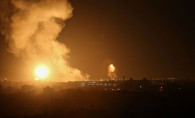Cholera invades DRC with high infection rates
Cholera invades DRC with high infection rates
Due to increasing conflicts, instability, and humanitarian crises, the World Health Organization (WHO) has reported the outbreak of cholera in many countries, especially in the Democratic Republic of Congo (DRC).
Increasing infections
The number of cholera cases and the geographic distribution of those cases have both increased since 2021. Cholera outbreaks were reported in 23 countries in 2021, while at least 29 nations reported cholera cases or outbreaks in 2022. As of November 30, 2022, there were ongoing outbreaks reported in 16 of these countries. Case fatality ratios (CFR) and case numbers in many of these nations were greater than in prior years. In Africa, the average cholera CFR reported in 2021 was 2.9%, WHO reported.
According to Relief Web, in the Democratic Republic of the Congo's Nyiragongo area, the number of persons suspected of having cholera has rapidly increased in just the past 10 days. At least 143 patients under the age of five were among the 472 patients treated by Médecins Sans Frontières (MSF) teams between November 26 and December 11 at the cholera treatment center in Munigi, a town near Goma. More than 177,000 individuals are currently stranded in terrible conditions, at the mercy of poor weather and epidemics, making the humanitarian situation even worse. The first confirmed cases of cholera in Kanyaruchinya were reported in August.
Climate change & humanitarian crisis
In 2022, cholera outbreaks have been recorded in a number of nations, many of which are dealing with storms (Mozambique, Malawi), flooding (Pakistan, Nigeria), and drought (countries in the Horn of Africa). Significant flooding and above-average hurricane seasons increase the severity of outbreaks and their potential to spread regionally. There is a chance that the disease will spread over Southern Africa during the upcoming rainy season, which is expected to be quite severe. Because of the exclusion of refugees and populations living in nomadic communities, poor access to water, and the growth of unofficial urban areas, many nations facing droughts suffer from cholera, WHO reported.
An increasing number of people are at risk for cholera throughout all WHO regions as a result of the rising humanitarian crises brought on by armed conflict, political unrest, and a lack of development. Nine of the nations that have reported outbreaks are undergoing political unrest or conflict in the afflicted regions (Afghanistan, Cameroon, the Democratic Republic of Congo, Haiti, Iran, Nigeria, Somalia, Syria, and Yemen), according to WHO.
What is cholera?
According to The Swaddle, cholera causes extremely severe acute watery diarrhea. Vibrio cholerae bacteria, which are present in contaminated food and water, is what causes the sickness. A cholera patient may begin to experience symptoms anytime between 12 hours and 5 days after catching the disease. Cholera can be dangerous if not treated right away. The disease is strongly associated with a lack of access to hygienic sanitation systems and clean drinking water, leaving poorer nations to suffer the brunt of the world's cholera cases.
WHO reported that cholera remains a global issue despite being easily curable with rehydration solution due to its high morbidity and fatality rates in people with inadequate access to healthcare. In the last 200 years, there have been seven different cholera pandemics. It is generally agreed that the seventh pandemic, which is still continuing strong now, took place primarily between 1961 and 1974.
Following its reintroduction, cholera has begun to spread throughout numerous nations at this time. Cholera was still widespread in several areas of Africa and Asia in the late 1990s despite a sharp decline in its global occurrence. Since most cases are not reported, the global impact of cholera is mainly unknown. Nonetheless, recent studies indicate that there are 2.9 million cases and 95,000 fatalities per year, according to WHO.







